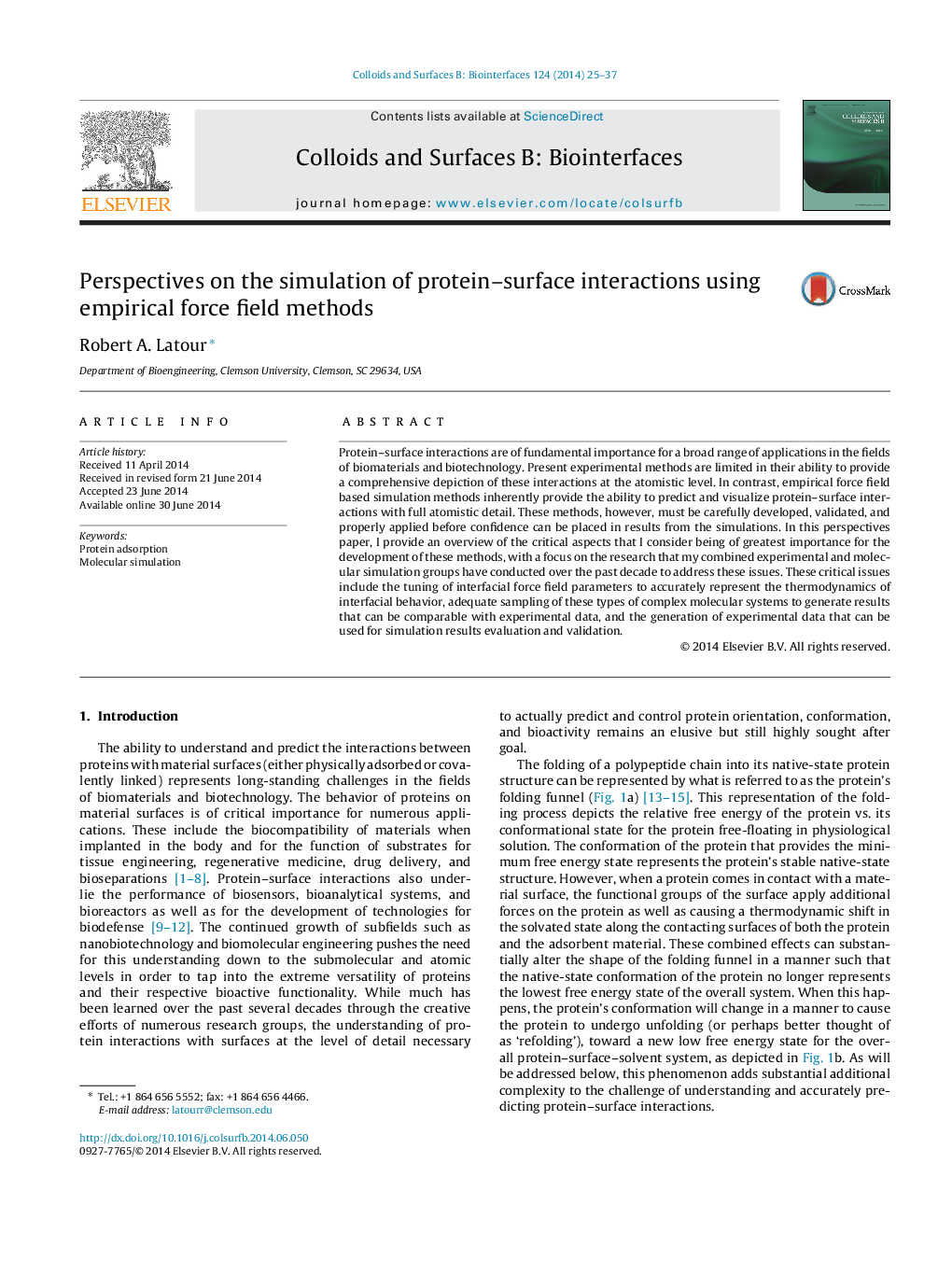| Article ID | Journal | Published Year | Pages | File Type |
|---|---|---|---|---|
| 599448 | Colloids and Surfaces B: Biointerfaces | 2014 | 13 Pages |
•Critical issues are addressed for the simulation of protein–surface interactions.•Critical Issue #1: Interfacial force field parameterization.•Critical Issue #2: Adequate conformational sampling.•Critical Issue #3: Experimental data suitable for simulation results evaluation and validation.
Protein–surface interactions are of fundamental importance for a broad range of applications in the fields of biomaterials and biotechnology. Present experimental methods are limited in their ability to provide a comprehensive depiction of these interactions at the atomistic level. In contrast, empirical force field based simulation methods inherently provide the ability to predict and visualize protein–surface interactions with full atomistic detail. These methods, however, must be carefully developed, validated, and properly applied before confidence can be placed in results from the simulations. In this perspectives paper, I provide an overview of the critical aspects that I consider being of greatest importance for the development of these methods, with a focus on the research that my combined experimental and molecular simulation groups have conducted over the past decade to address these issues. These critical issues include the tuning of interfacial force field parameters to accurately represent the thermodynamics of interfacial behavior, adequate sampling of these types of complex molecular systems to generate results that can be comparable with experimental data, and the generation of experimental data that can be used for simulation results evaluation and validation.
Graphical abstractFigure optionsDownload full-size imageDownload as PowerPoint slide
